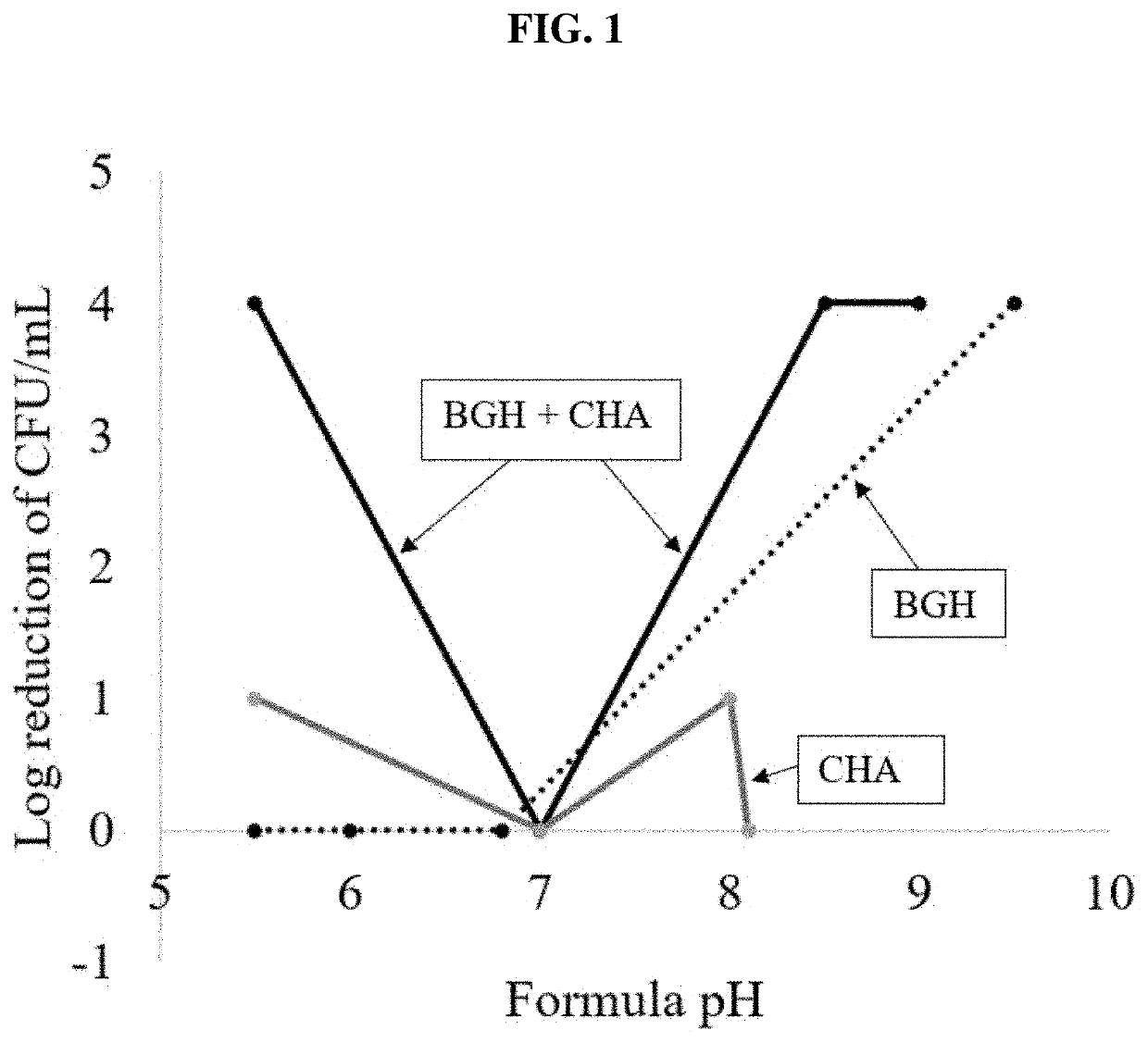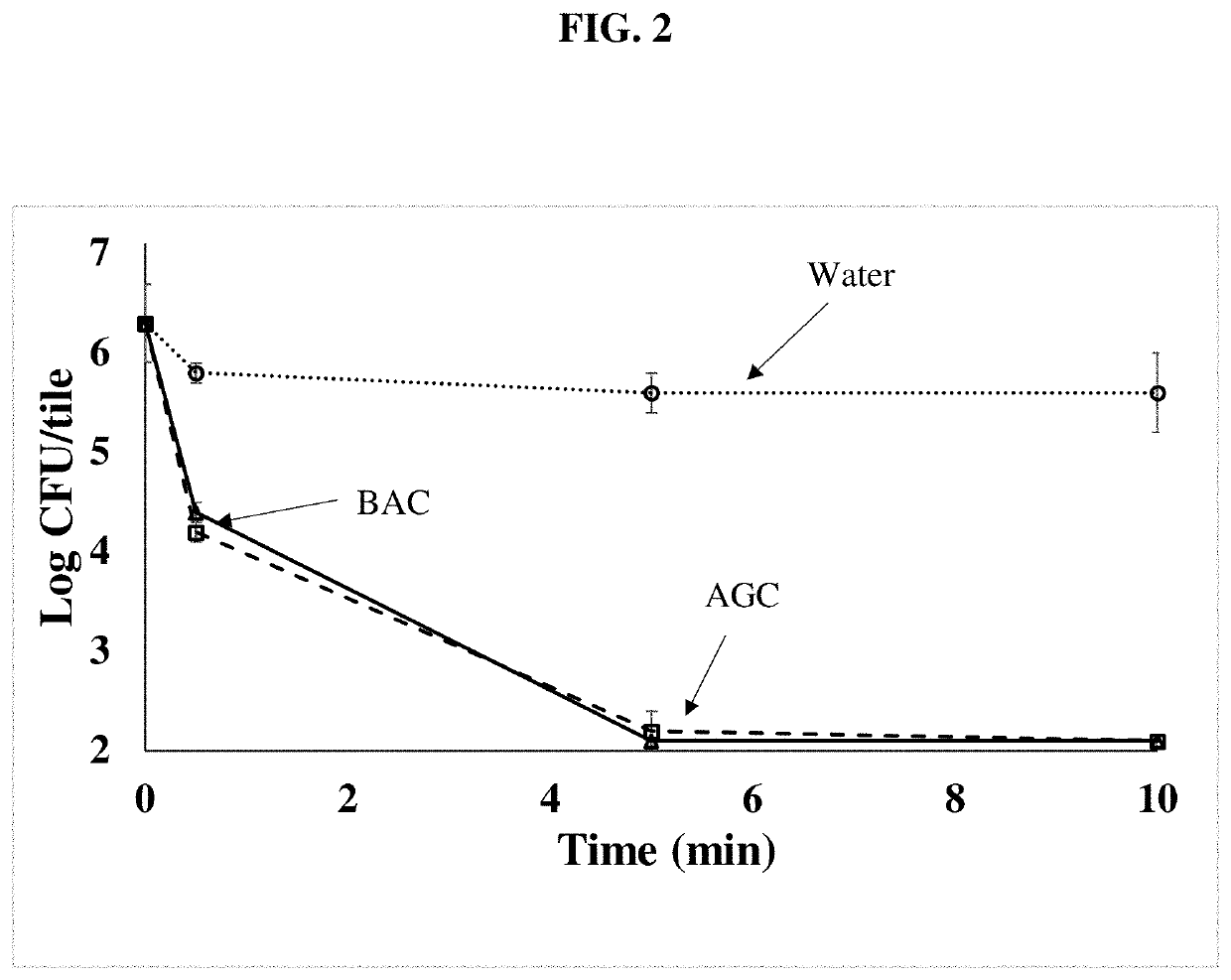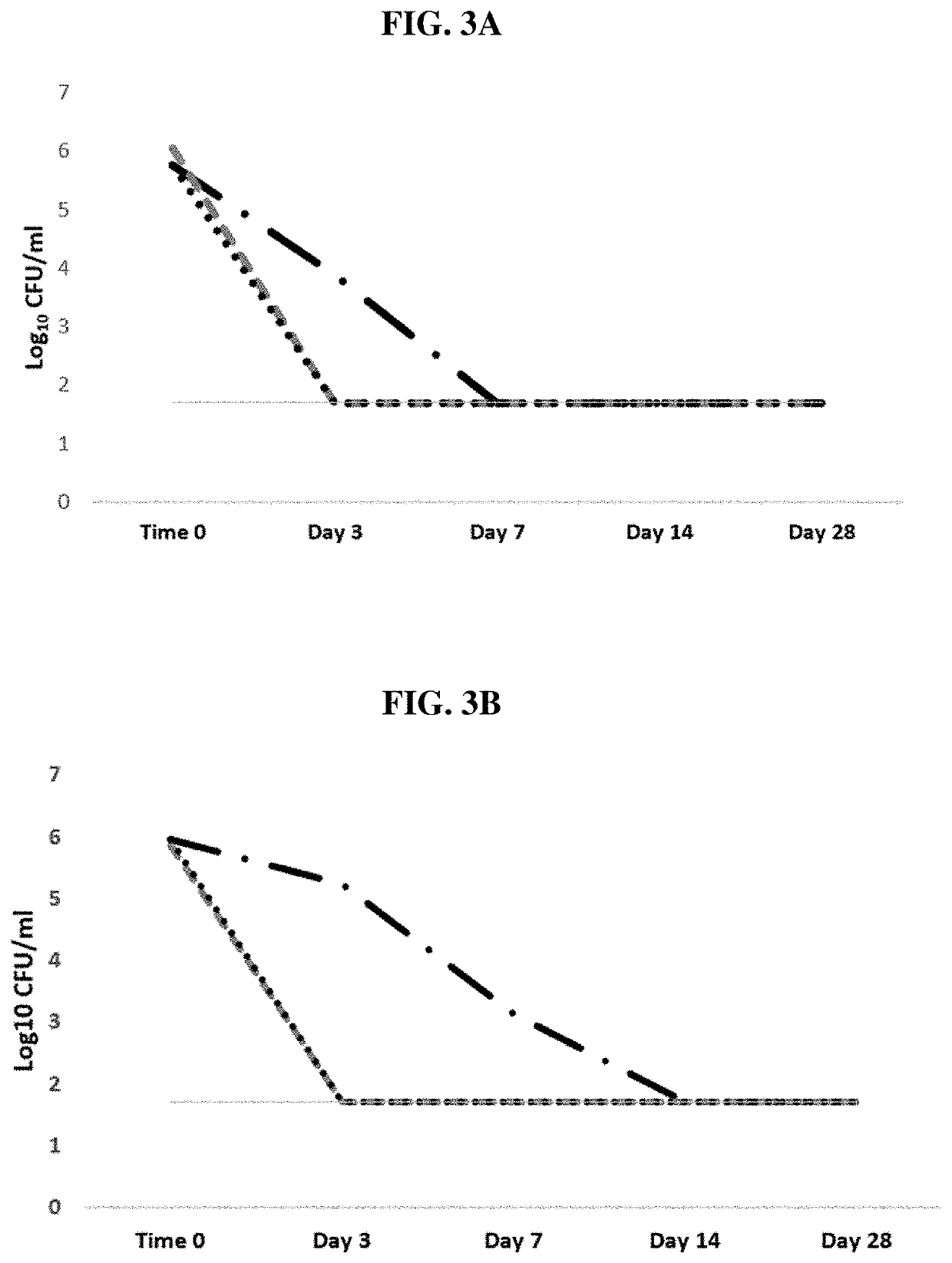Broad-spectrum synergistic antimicrobial compositions
a broad-spectrum, antimicrobial technology, applied in the field of new and synergistic antimicrobial compositions, can solve the problems of human and environmental hazards, deactivation and generally incompatible, and difficulty in preservation of these formulations at mild ph (6-8), so as to minimize the risk of antimicrobial resistance and reduce the risk of developing resistant strains in the environment. , the effect of less toxi
- Summary
- Abstract
- Description
- Claims
- Application Information
AI Technical Summary
Benefits of technology
Problems solved by technology
Method used
Image
Examples
example 1
[0047]This example illustrates preparation of the hydroxamic acid component of the inventive composition (see e.g., Premachandran, R. et al., PCT Publication No. WO / 2016 / 164555; Synergistic preservative compositions, 2018). Aroyl chlorides were prepared as a precursor to the hydroxamic acid. A 10 mmol solution of aroyl acid was prepared in 20 mL chloroform and 12 mmol oxalyl chloride (Sigma-Aldrich, St. Louis, Mo.) was added. Dimethylformamide (DMF, 99.8%, Sigma-Aldrich) was added as a catalyst and the reaction was stirred overnight (e.g., 18 h). This reaction was estimated to have produced 10 mmol of the aroyl acid chloride of the substituted aroyl acid. The reaction for each aroyl chloride was continued with the addition of ˜22 mmol NH2OH.HCl (hydroxylamine hydrochloride; Fisher Scientific, Fair Lawn, N.J.) and ˜50 mmol triethylamine (TEA; ≥99%, Sigma-Aldrich), and was stirred for at least 7 hours. The resulting solution was washed 3 times with equivalent volume of 1 N HCl and dri...
example 2
[0049]This example illustrates the preparation of testing parameters for antimicrobial activity of components of the inventive composition and related compositions for comparison. For this testing, minimum inhibitory concentrations (MIC) were obtained as follows (see e.g., Buckley, H. L. et al. Design and Testing of Safer, More Effective Preservatives for Consumer Products. ACS Sustain. Chem. Eng. 5, 4320-4331, 2017). Mold were grown and minimum inhibitory tests performed as previously reported (see e.g., Buckley, H. L. et al. ACS Sustain. Chem. Eng. 5, 4320-4331, 2017). Microbes were grown on Mueller-Hinton agar (MHA, Sigma-Aldrich, St. Louis, Mo.) for 7 days until heavy sporulation was present. Spores from two agar plates were captured in sterile phosphate-buffered saline (PBS) using a sterile swab. Spores were enumerated by serial dilution in Dey-Engley neutralizing broth (DEB; Sigma-Aldrich) and spread plating on MHA. A typical spore stock was determined to contain ˜2×107 spores...
example 3
[0059]This example illustrates the surprising synergistic antimicrobial activity of the inventive composition and related compositions for comparison tested on two of the most persistent microorganisms tested in the USP 51 protocol: A. brasiliensis (ATCC No. 16404) and P. aeruginosa (ATCC NO. 9027). The effect of pH on antifungal properties of a HW formula containing 0.4% 7 and 0.5% CHA, alone and in combination, was then evaluated under a high fungal load (107 CFU / mL). Moderate to poor performance was observed with CHA over the entire pH range (0-1 log reduction). 7 alone also exhibited poor performance, except at high pH. Good performance was observed with formulas containing the 7+CHA combination at pH 5.5, 8.5, and 9.0; with low performance at pH 7.0 (Table 6). Without intending to be bound by theory, it was suspected that the poor performance of the combination at neutral pH results from the milder conditions of this formula, which is more encouraging to mold growth.
TABLE 6USP-...
PUM
| Property | Measurement | Unit |
|---|---|---|
| wt % | aaaaa | aaaaa |
| temperature | aaaaa | aaaaa |
| temperature | aaaaa | aaaaa |
Abstract
Description
Claims
Application Information
 Login to View More
Login to View More - R&D
- Intellectual Property
- Life Sciences
- Materials
- Tech Scout
- Unparalleled Data Quality
- Higher Quality Content
- 60% Fewer Hallucinations
Browse by: Latest US Patents, China's latest patents, Technical Efficacy Thesaurus, Application Domain, Technology Topic, Popular Technical Reports.
© 2025 PatSnap. All rights reserved.Legal|Privacy policy|Modern Slavery Act Transparency Statement|Sitemap|About US| Contact US: help@patsnap.com



